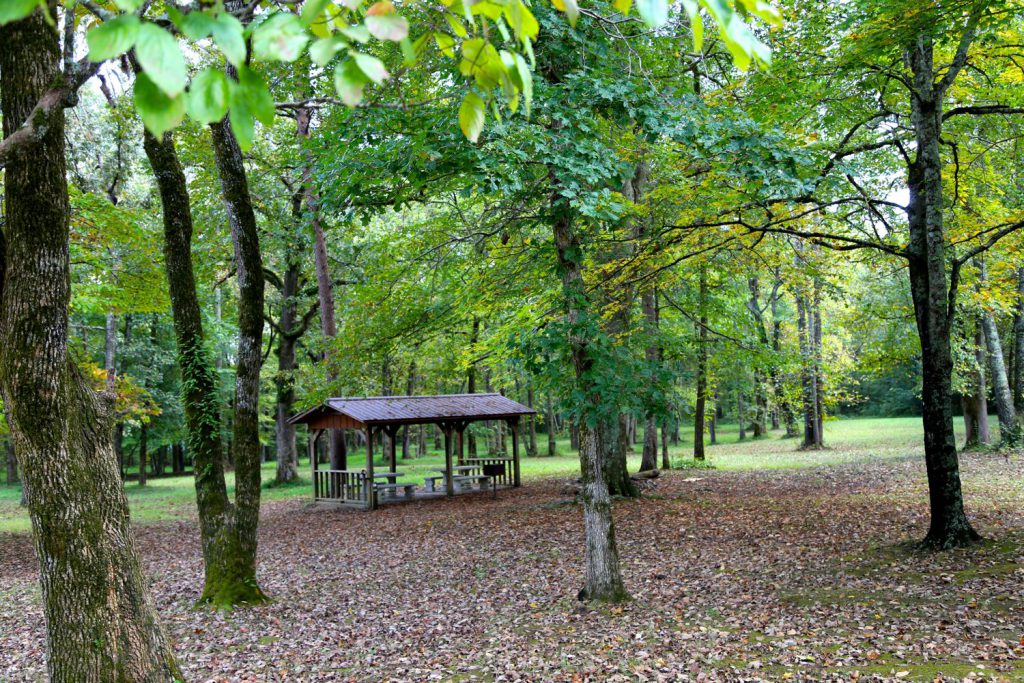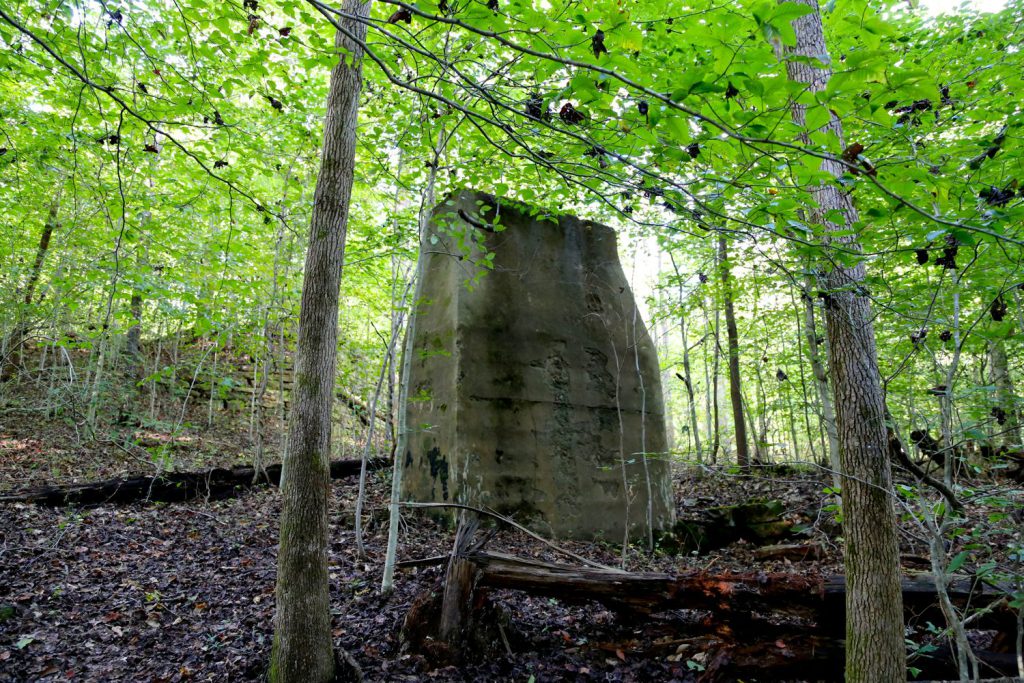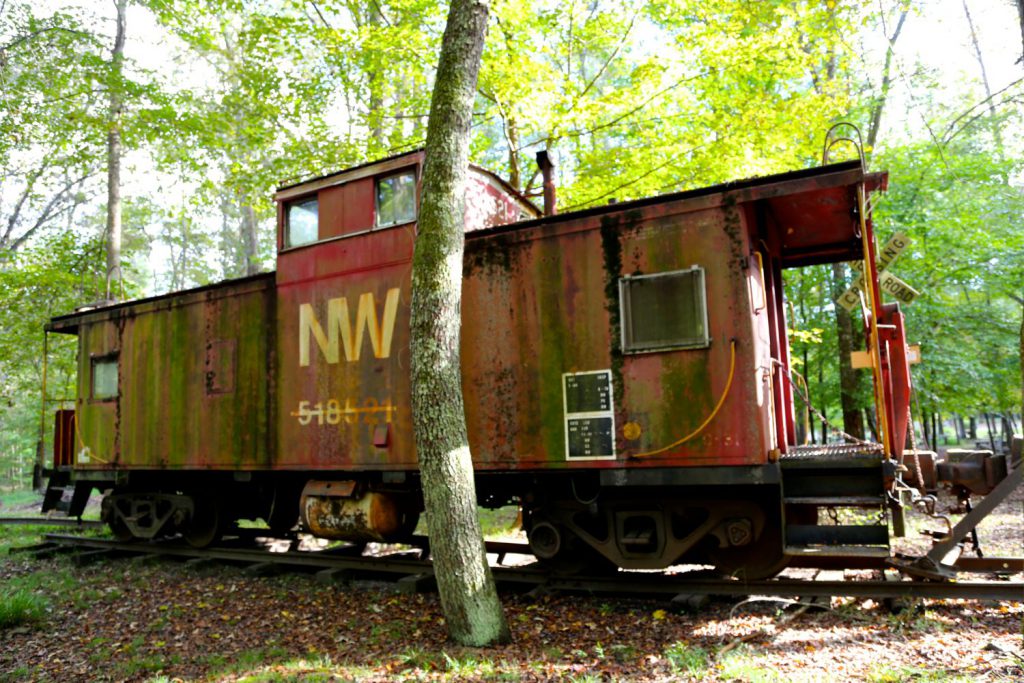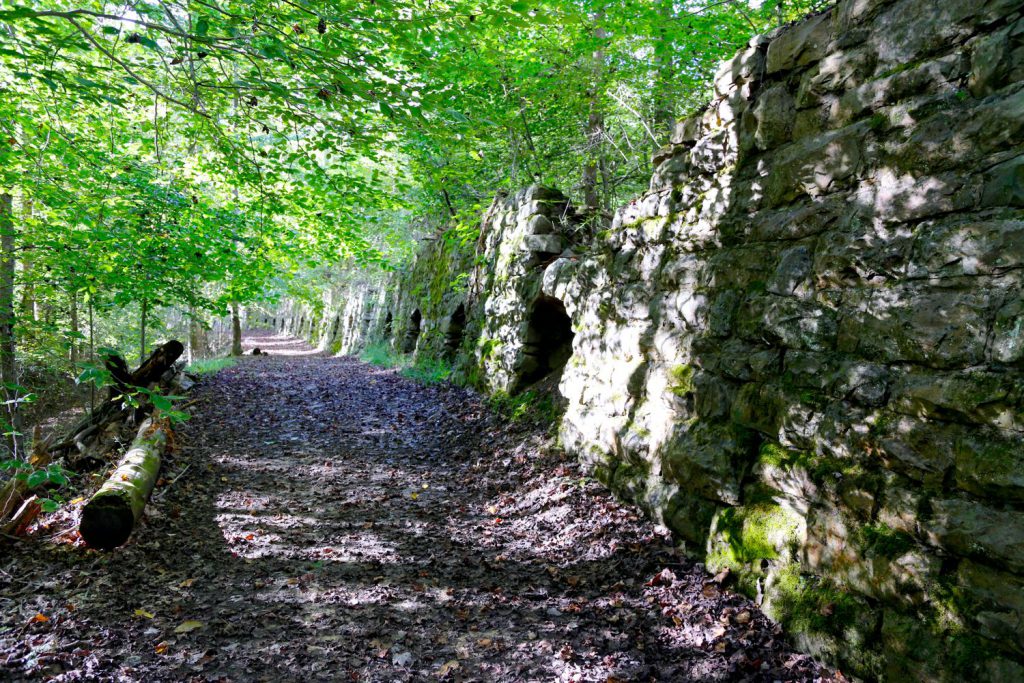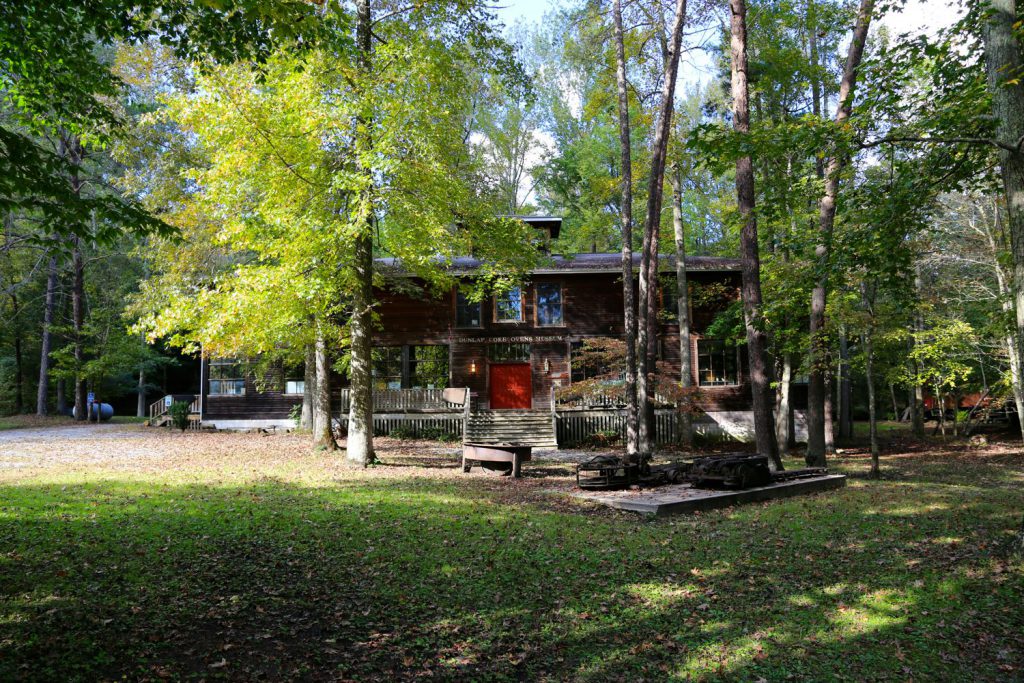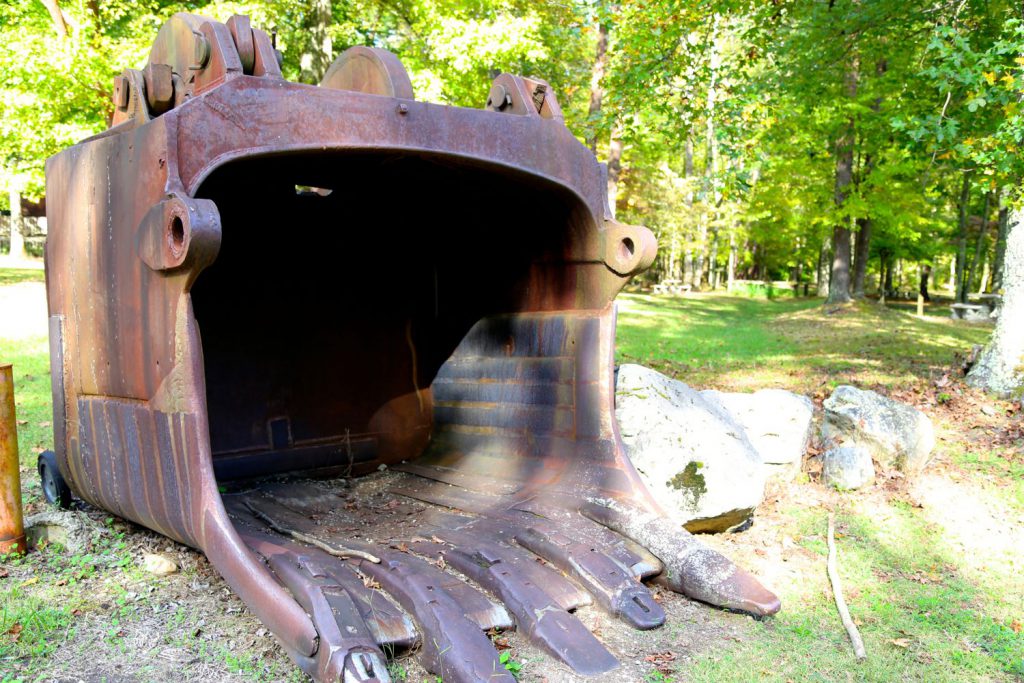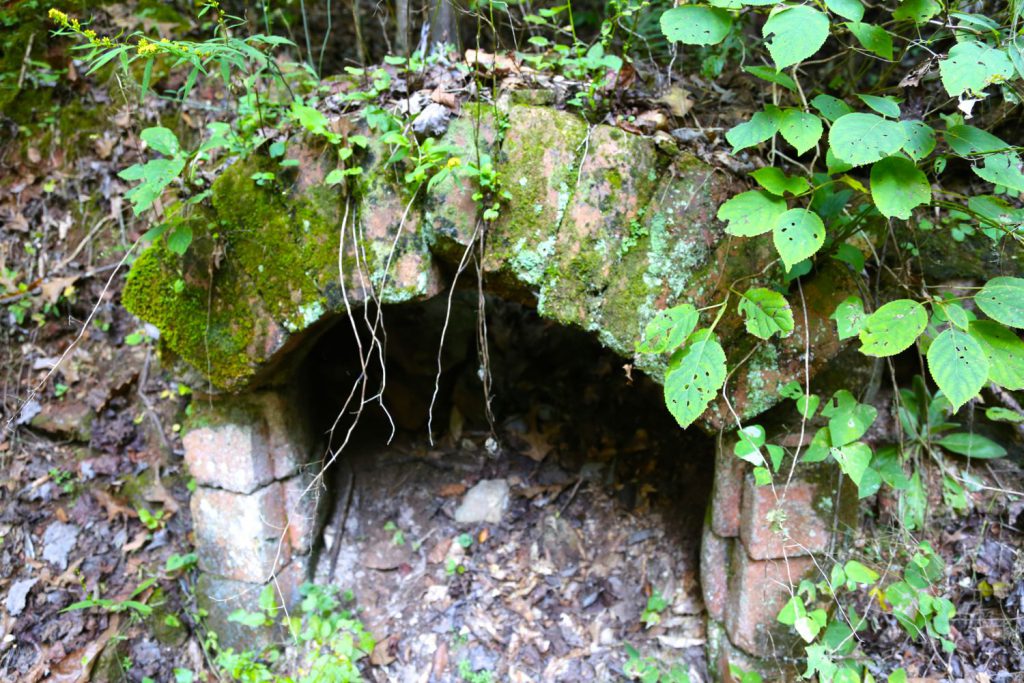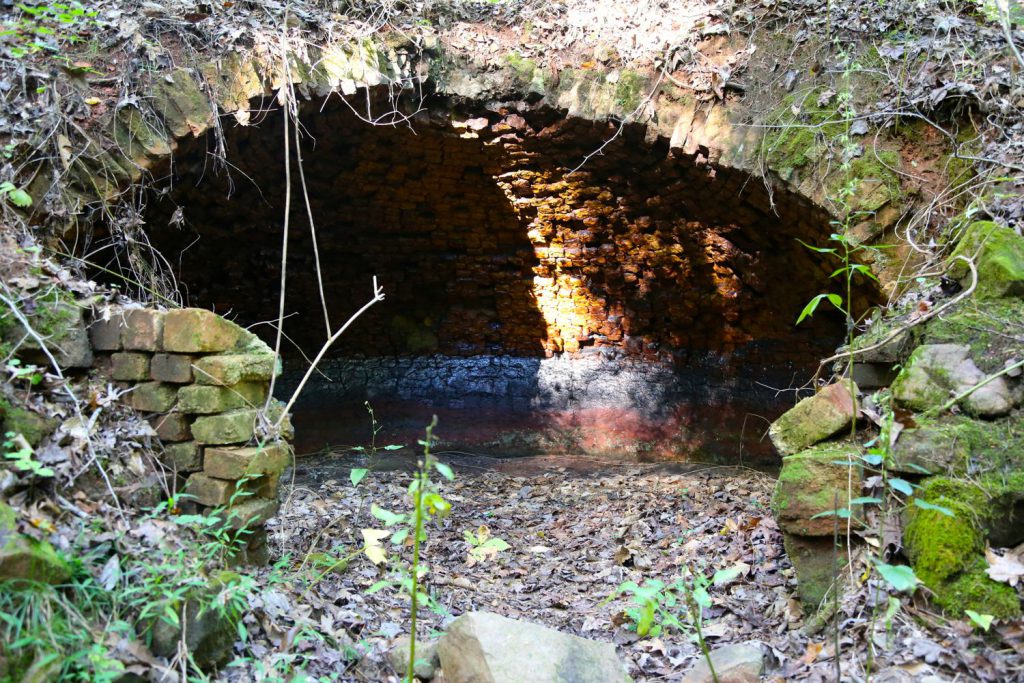Deep in the Sequatchie Valley, Tennessee is a collection of industrial coke ovens from the turn of the 20th century.
History
Coke ovens were used to convert the coal mined in nearby Fredonia Mountain into industrial coke used in smelting iron ore. The Industrial Revolution and the steel industry drove a demand for pig iron; and coke was an integral part in its production. Over the early 1900s, 268 beehive ovens were constructed and operated, until the early 1920s. The produced coke was then transported to nearby Chattanooga for use in their blast furnaces.
Prior to the introduction of the coke ovens, most of Sequatchie Valley residents survived by subsistence farming. In the 1880s, the railroad arrived along with major coal mining operations. Coal was mined from the nearby Fredonia Mountain starting in 1899, though it was considered too soft for domestic purposes. The Douglas Coal and Coke Company came to the valley the next year, building coke ovens and establishing its own coal mines to supply them. Though the company had built 50 coke ovens along with coal mines, and a company town by 1902, labor problems and inefficiencies in separating coal from dirt lead the company to halt operations in 1904.
in 1905, the Chattanooga Iron and Coal Company purchased the Douglas operation. Unlike Douglass, Chattanooga had a streamlined process, with quarries in Georgia to supply iron and a smelting plant in Tannery Flat, outside of Chattanooga to process the iron ore into pig iron, using the Dunlap coke. The company operated profitably until 1916, when a boiler explosion destroyed the coal washer. The washer was expensive to replace and the new one performed poorly, so that, in 1919, the entire iron and coke operation was sold to Southern States Iron and Coal Company. The ovens remained in operations until 1922. While there was an attempt to revive production in 1928, those hopes were dashed with the onset of the Great Depression.
In 1985, the ovens were placed on the National Register of Historic Places, and was opened as a park in 1987.
The Process
The ovens themselves are arranged into five batteries—four back-to-back batteries and one “single” battery that was built against an embankment. Each battery is about 9 feet tall, 37 feet wide, and varies in length according to the number of ovens built into it. The largest battery contains 100 ovens and the smallest has 24.
An incline railway brought coal from the Fredonia Mountain above the ovens in the valley. Each battery had an additional railroad running on top for transporting coal, from which freshly mined coal could be dumped through a “window” on top of each oven. A laborer would use a scraper from the side opening of the oven to level the deposited coal. Then, the opening would be sealed with clay and the coal would be cooked in the closed chamber for 72 hours to remove any volatile material. It would take two tons of coal to produce one ton of coke.
The Museum
The Dunlap Coke Ovens Museum is a careful recreation of the company store “Commissary,” down to the very location. It is nestled between the trees that have shot up and reclaimed previously industrial areas in a yard scattered with large, aging equipment on display. It contains the largest collection of coal mining photographs in Tennessee. Unfortunately, as the Coke Ovens Museum is only open on weekends and the nearby Coal Miners Museum is only open on weekdays, we had to make a judgement call and only enjoyed a view of the museum from the outside. Fortunately, theres a lot to see from the outside.
The Park
The Dunlap Coke Ovens Park is 88 acres of sprawling, shady mountainside, riddled with paths. It contains the ruins of 268 coke ovens, in varying states of dilapidation and dismantling. Over time, rocks and bricks have been scavenged for other projects. Fortunately, this varying wear means that different parts of the ovens can be seen. Along the west side of the park, among a collection of 82 ovens built in 1906, once can see the nearly complete but exposed firebrick interiors. While, on the east side of the park, a large number of the 100 ovens built in 1916 maintain much of their original sandstone exteriors. The old moss covered stone illicit an almost etherial sense of time gone by.

